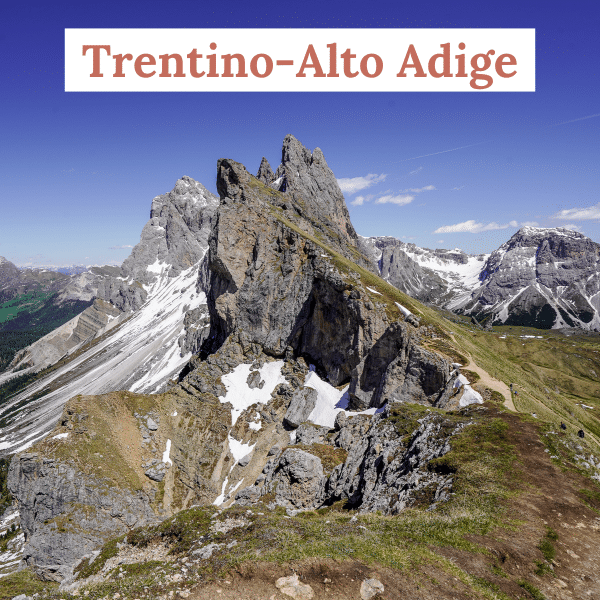Would you like to plan a northern Italy trip? Well, you’re in for a trip of a lifetime!
With so much to see, do, and experience, though, it’s easy to feel overwhelmed about how to spend your precious days in northern Italy!
This guide has everything you need to plan northern Italy travel, from the beginning research steps to the necessary pre-departure steps to take for a successful trip.
Ready to start planning? Andiamo!
1. Planning Northern Italy Travel: What to Do First

As you think of planning a trip to Italy, you may be wondering if it’s worth visiting only northern Italy.
After all, “il Bel Paese” has so many incredible places to visit from north to south!
Northern Italy has a rich history, culture, and so many beautiful places to explore, experience, and enjoy. You can hardly go for more than a short drive or distance without passing local restaurants serving the most amazing specialty you’ll ever taste or charming towns with can’t-miss historic centers!
Spectacular panoramic views stretch as far as you can see from the Adriatic Sea to the mountain ranges of the Alps, the Mediterranean, and the beautiful cities in Emilia Romagna. Major cities from Turin to Milan and Venice and the surrounding areas have historic buildings like the Palazzo Madama and Palazzo Reale in Turin to the numerous castles and historic sites waiting to be discovered in the hills, alongside the lakes, and in the mountains.
The best way to plan a trip to Italy is to focus on specific regions instead of trying to crisscross the country. In addition to the amazing sites, food, people, art, and natural beauty, you don’t want to miss out on “la dolce vita!”
You want your itinerary to include time to enjoy simple moments, like the pleasure that comes with sipping a cappuccino in a quiet piazza overlooking a lake, strolling through a market with a gelato cone, or sitting seaside as the day trippers leave watching the sun dip closer to the horizon.
Northern Italy allows for all of this and more! You can check off must-sees, discover hidden gems, and experience a small slice of the Italian lifestyle.
When to Go
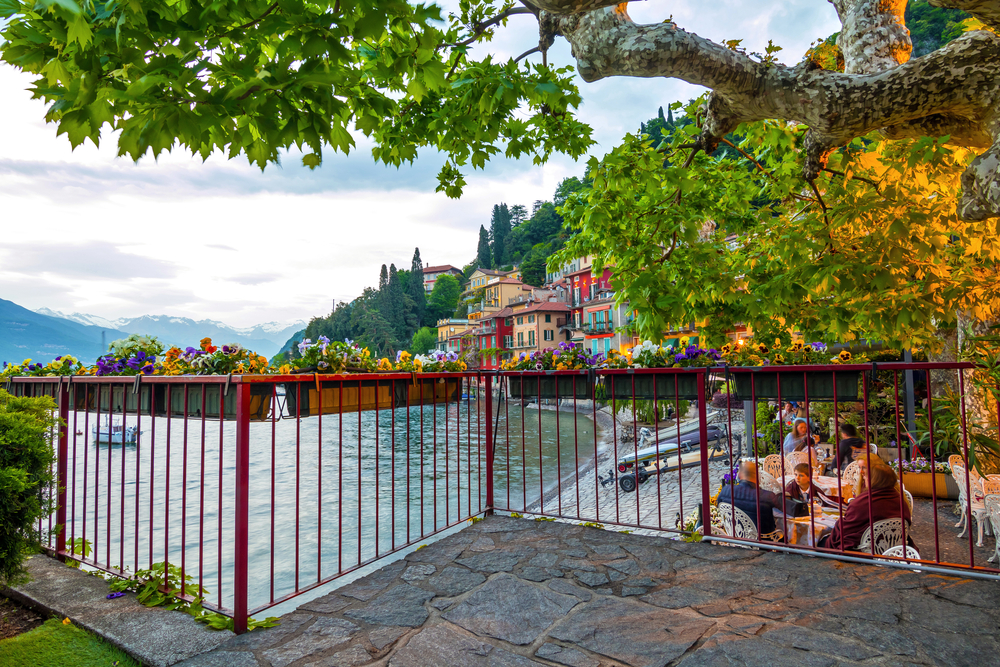
Travel in northern Italy is always a good idea!
It depends more on your preferences, where you’d like to visit, and what you’d like to do. For example, a city-hopping sightseeing trip can be better in the spring, fall, and even winter because the temperatures (even chillier winter temps) are more pleasant for walking around than during what can be the sweltering heat of summer. Not to mention sights and museums tend to be less crowded and great spots to escape an off-weather day. Whereas if you want to ski in the Alps or lounge beachside in the Italian Riviera, the season to visit will be more fixed.
If you don’t have travel flexibility (i.e. we must travel in summer because the kids are on summer break), consider the general weather of each season and plan your perfect northern Italy itinerary accordingly. Traveling in summer but want to avoid the heat? Plan time in the mountains of the Dolomites or the Valle d’Aosta. Prefer water to mountains? Retreat to the sea in the Italian Riviera or northern Italy’s beautiful Lakes Region.
I’ve spent time in Italy during every season, multiple times. I would recommend you consider spring or fall if your schedule allows. These seasons offer the best combination of pleasant weather, pricing, and the number of visitors.
Below is an outline of each season. I’ve included a sampling of the things you can see and do in northern Italy during these months, as well as some general tips to help as you plan your trip.
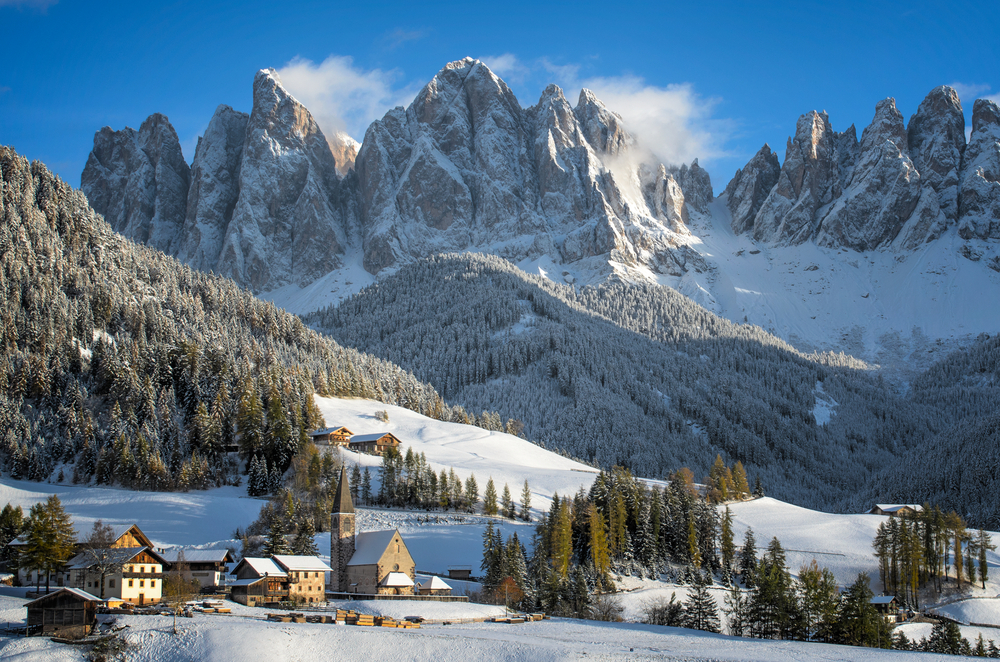
December-February: Generally, winter in northern Italy comes with cooler temperatures and fewer travelers sightseeing. This makes it easier to book tickets for popular attractions like the Doge’s Palace in Venice or the Last Supper painting in Milan and less expensive to book flights and hotels.
In December, lights and decorations sparkle in cities like Turin, while the Christmas markets in places like Bolzano and Milan add to the festivities. Carnevale is celebrated in February and is most famous in Venice. Not only do prices rise during this time, but it also may not be the best time to visit the city if you don’t intend to take part in the festivities. Snow sports abound in Italy’s stunning Alps in the Dolomites and the Valle d’Aosta while the beach towns in the Cinque Terre will be quiet with some restaurants and hotels closed for the season.
March-May: As spring arrives so do more pleasant temperatures. Keep in mind that Alpine resort towns and the surrounding mountains are chillier than lower elevations and largely still in winter ski mode. But elsewhere, flowers begin to bloom and the rolling hills once again turn to green.
That being said, spring is an ideal time to visit northern Italy, especially if you’re hoping to blend time between city sightseeing and natural wonders. Hotels and restaurants re-open along the Ligurian coast and in the Lakes Region. In particular, it can be a great time to visit the Cinque Terre to hike the famous coastal trail because the temperatures are moderate and the trails still largely quiet compared to the crowds of summer.
It’s smart to prepare for any potential rainy days, but typically these days are mixed in with plenty of days of sun.
June-August: Summer is Italy’s peak travel season, and the north is no exception. With high season, expect pricing for flights, hotels, and rental cars to match the demand, as well as for popular sights and places to be at their busiest. Temperatures will be warm to hot so it’s best to pace any city explorations and better yet, mix in days near the water or in the mountains.
The summer months are also the time of year when many Italians take time off for vacation. Coastal towns are a hive for beachside activities and lounging. Hotels and other accommodations, especially, book up quickly in these areas. Aside from beaches along northern Italy’s eastern and western coastlines, places like Lake Como, Lake Garda, and Lake Maggiore also offer a waterside retreat and outdoor activities. It’s also the best time to road trip and hike in the spectacular Dolomites in Italy’s northeastern corner.
September-November: Similar to spring, fall can also be a perfect time to plan a trip to northern Italy. Temperatures are mild, with crisp nights as you get deeper into the season. If you love Italian food and wine (and who doesn’t?!?), fall is for you! In Piedmont, the grapes are ready to harvest and truffles are in season. The oranges, reds, and yellows of fall can be enjoyed whether you’re visiting the Lakes, city hopping through Emilia-Romagna, or visiting castles and Roman ruins in the Aosta Valley.
September is also nice for a little bonus beach time. The waters of the Mediterranean Seas are still warm and the days have plenty of sunshine. Even better, accommodation prices cool and the crowds begin to thin in many of these coastal regions
As with spring, rain is possible but with enough blue-sky days to make your time in northern Italy unforgettable.
What’s on Your Travel Northern Italy Bucket List?
In this beginning phase of travel planning, determine which regions and places you’d like to visit during your northern Italy trip. It’s not necessary to limit yourself yet or make any final itinerary decisions. Use resources like travel blogs, northern Italy guidebooks, Pinterest, and Instagram to inspire you. Facebook Groups are good for asking questions and getting tips and ideas.
Spend time getting to know the 8 regions of northern Italy. Each one has its own history, culture, dialect, cuisine, and landscape to discover!

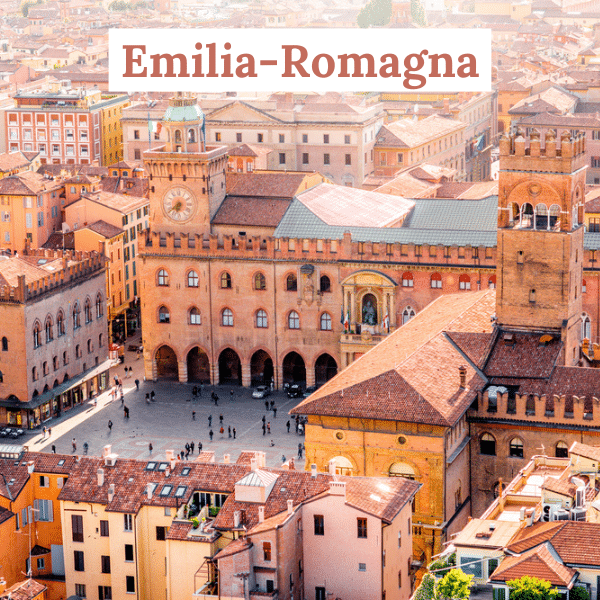
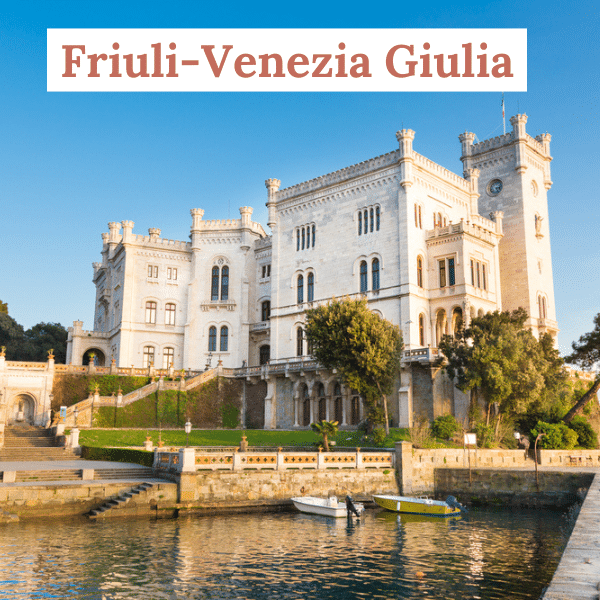
Discover the best places to visit in northern Italy through lists like these and then spend time looking up the places that catch your eye. Even if you already have an idea of the places you’d like to go to in northern Italy, take a little time to research. Oftentimes, hidden gems are hiding in plain sight just near some of the area’s most famous towns and sights! Including a few of these gems is the key to eventually planning a one-of-a-kind trip to northern Italy.
Visas & Passports
Italy is part of the European Union and is a member of the Schengen Area. If you aren’t a citizen of the European Union, you will need a passport to enter Italy. Now is the time to make sure your passport is valid and not damaged if you don’t have a passport or haven’t used yours in a while. If need be, apply or renew now.
Please beware that your passport needs to be valid for at least 6 months from when you enter Italy. It may be possible to enter Italy with slightly less passport validity (i.e. 5 months), however, it’s not something to be left to chance. In addition, you should have at least 2 blank pages in your passport booklet.
If you are a citizen of the U.S, Canada, the U.K, Australia, or New Zealand, you are allowed to stay in Italy for 90 days in any 180-day period. Through 2022 and into 2023, citizens of these countries can enter Italy with just a valid passport. Beginning in November 2023, citizens of these visa-free countries will need to apply for an ETIAS, which is not a visa, but rather a travel authorization application.
The form will be filled out online and processed immediately. You need a valid passport, an email address, and a debit or credit card to pay the 7 Euros for the application fee. Once issued, your ETIAS will be valid for 3 years or when your passport expires, if that occurs first.
Passport and visa information is always subject to change. Please use this website to confirm the requirements for your country. If you are a citizen of one of the countries below, I’ve included your country’s travel guidelines page which is also good to look at for the latest entry requirements.
Northern Italy Trip Budget
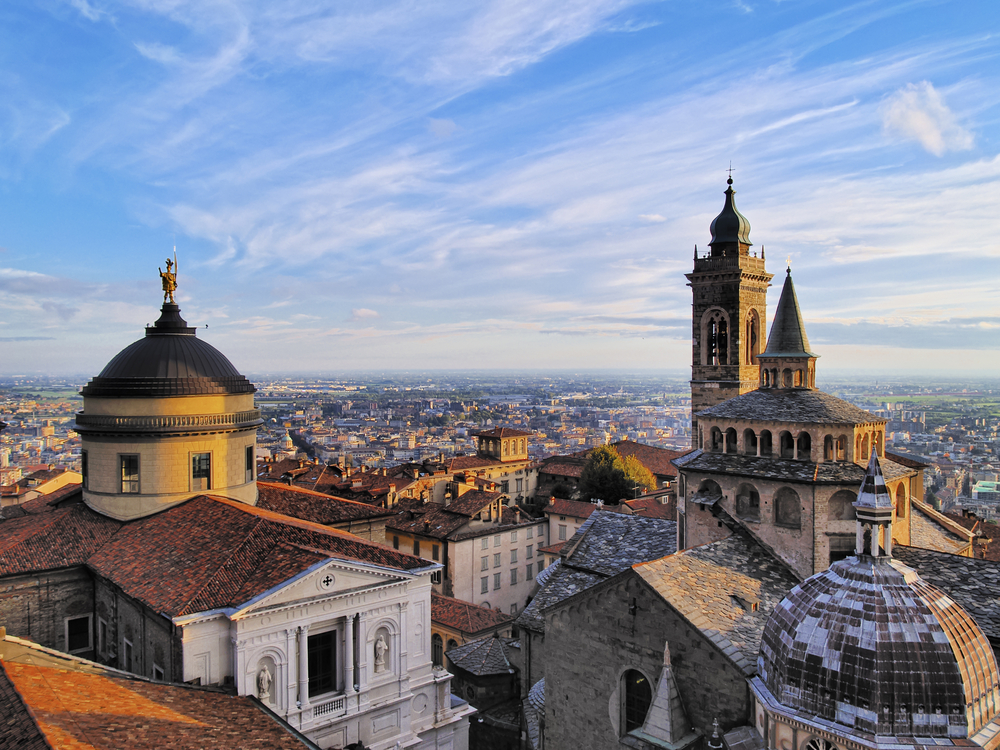
Travel budgets are subjective, based on each person’s travel style, must-sees and dos, as well as seasonality. Obviously, the number of days you plan to spend in northern Italy also plays an important role in understanding how much money you can spend each day.
The cost of flights tends to be closely linked to seasonality and holidays. Busier seasons like summer or around school vacations tend to bump up the cost of airfare. But with a little flexibility, even traveling just a month out from the summer season, you can find airfares for much less during these times when the demand has gone down.
Airfare sites like Google Flights, Momondo, and Skyscanner do a great job of finding the best-priced flights. Google Flights also has a calendar view when you click on the field to enter your travel dates. The calendar will drop down and show the lowest price fares across many months so you can get an idea of what flights to northern Italy cost compared to the dates you’re considering.
You can find a range of accommodation pricing in Northern Italy, from extravagant luxury hotels on the shores of Lake Como or in the Italian Riviera’s Positano to budget-friendly B&Bs in the many small towns and villages that dot the countryside.
Once you move away from bigger cities, food costs also tend to be more affordable.
As you work out what your Italy trip budget might be, it’ll also help you better focus on the things you really want to see and do. While this may not sound great, it definitely is! Budgeting helps you manage your trip money and helps you avoid a very typical travel mistake…an overpacked itinerary!
2. Northern Italy Itinerary Planning & Booking
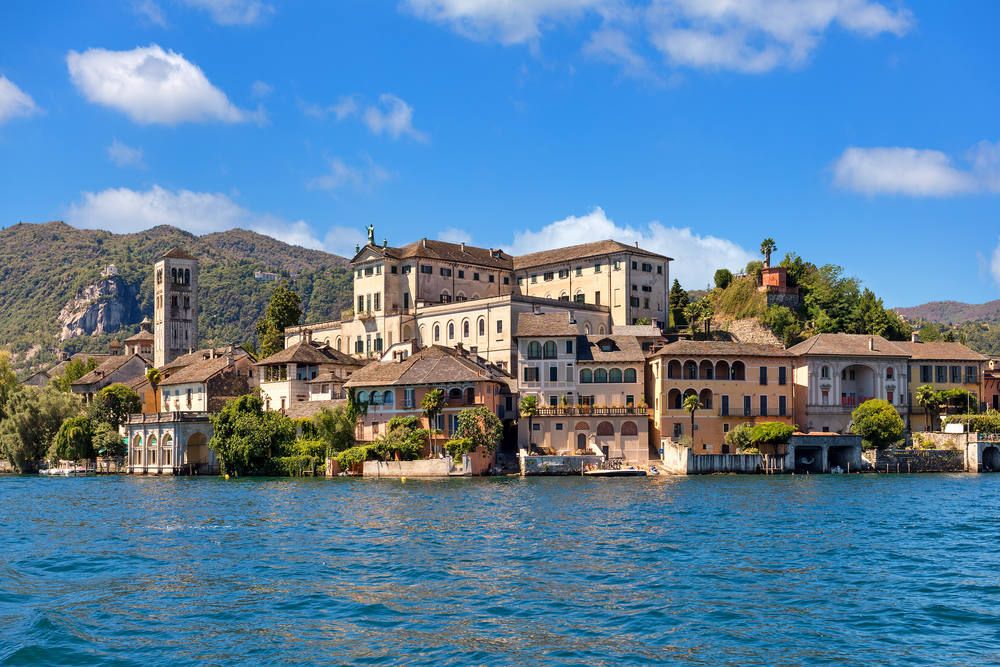
This is the time to decide where in northern Italy you would like to go and to outline how long your itinerary will be.
As tempting as it is to try and see “everything,” think of it this way. North Italy is more than 46,000 square miles, with countless cities, towns, sights, and UNESCO World Heritage Sites. And don’t forget the Alps, the lakes, the beaches along the Italian Riviera, and the rolling hills of vineyards. For a visual, check out this detailed map of northern Italy complete with lakes, cities, and UNESCO World Heritage Sites.
If you’re planning a 7-day northern Italy itinerary, then you’ll want to try to limit yourself to 2 places as “bases.” You can certainly day trip from these places to see more but you’ll have a much more comfortable pace, as well as time to adequately experience a place, by not changing accommodations each day.
With extra time, like 10 days in northern Italy, 14 days in northern Italy, or more, your options for what’s possible expand.
Instead of day tripping to Lake Como or Lake Garda, you can stay in one of the many beautiful lakeside towns and perhaps also discover Lake Maggiore, Isola Bella, and Lake Orta.
One day to the Cinque Terre villages like Monterosso al Mare can become multiple days to enjoy the more off-the-beaten-path (but no less spectacular) villages along the Mediterranean coastline.
A day in the Italian Alps can become a mini road trip to drool over the breathtaking mountain scenery.
For a quick reference, consider these northern Italy itinerary tips. The suggested number of days is the minimum in order to avoid really rushing from place to place. Add more days if you plan to day trip from these points.
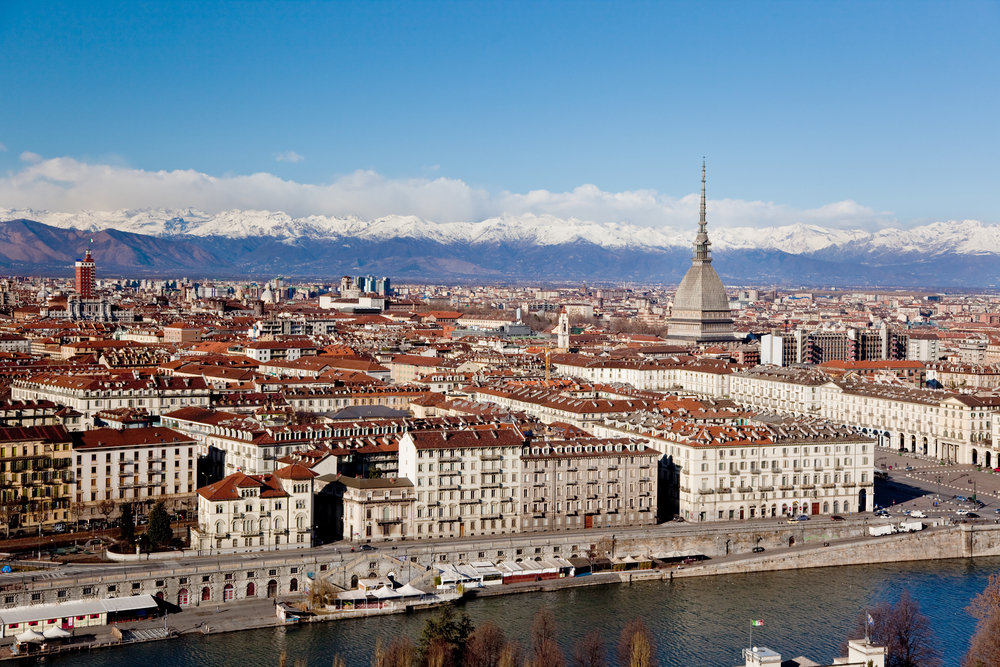
Venice: 2 days to explore and enjoy the city, more if you’d like to see any of the small islands or take a day trip to nearby places like Verona or Lake Garda.
Milan: 2 days in Milan to explore beyond the Duomo, Galleria Vittorio Emanuele II, and the Last Supper painting.
Lake Como or Lake Garda: At least, 2-3 days at each lake to village-hop and enjoy the countless sights and activities around the lakes.
Cinque Terre: With 2 days, you can move at a comfortable pace among the 5 villages. If you stay longer, you can visit hidden gems like Portovenere.
Turin: 2 days in Turin gives you the chance to see the city’s top sights, including the Royal Palaces and the view from the top of the Mole.
Bologna: You’ll need at least 2 days to see and eat your way through Bologna!
Dolomites: At least 3 days, if you plan to hike, and base yourself in 1 area like in the Val Gardena/Ortisei area. It’s possible to road trip 5-7 days in just the Dolomites, if you’re also hoping to hike and enjoy the mountain villages and lakes into the Cortina d’Ampezzo area.
Regardless of how long your northern Italy itinerary is, the area’s food, culture, history, landscapes, people, and language will absolutely capture your heart!
Getting to Northern Italy

There are several major airports in northern Italy. Milan’s Malpensa Airport is the busiest, with flights arriving from within Italy and from many points around the world. Venice’s Marco Polo airport also has international flights, including seasonal routes operated from cities in the U.S. and Canada.
There are also airports in cities like Turin, Bergamo, Genoa, Bologna, Verona, and even another Milan airport that services flights from many European cities.
The great thing about so many airports in the north of Italy is the ability to fly into 1 airport and out of another airport. This not only maximizes your time by avoiding needless backtracking to your original airport but also the price usually isn’t that much more when you factor in transportation costs to return to your original airport.
When to Book Your Flight to Northern Italy
Generally, for flights to Italy you want to book 4-12 months in advance. If you’re traveling in summer, around a holiday period, or have no flexibility with your travel dates, book as far in advance as you can.
Tools like Google Flights have the calendar view mentioned above and airlines generally open their schedules 331 days in advance. That means at the end of August, can see prices for flights to Milan the following June. Google Flights also has helpful tools like their “Date Grid” and “Price Graph” to help you see which dates are the cheapest to fly. Sometimes one small change can result in big savings.
Skyscanner and Momondo are also great places to search. They are flight aggregators, which means they are looking for the cheapest prices and not favoring results they themselves are selling.
Hopper is a travel app that also has great flight data. Hopper analyzes data and will tell you whether you should book now or wait.
Regardless of where you search, be sure to use an incognito or private browser tab and clear your cookies and computer cache regularly. If you’ve searched often and noticed that prices have gone up, consider switching devices. For example, use a spouse’s computer or your phone instead to see if the original price will re-appear.
Lastly, it’s typically cheaper to fly into Milan compared to Rome. So even if your trip to Italy includes places further south, it likely makes sense to start your itinerary in northern Italy.
Train Travel to Northern Italy
The northern regions of Italy are well-connected by trains from cities all over Europe. A potential benefit to arriving by train is not having to position yourself from an airport but rather to start in the exact place you need, like Turin or Trieste.
If you are coming from another point in Europe, use a tool like Omio to help piece together your route. Keep in mind that the further out you book your train tickets, the less the price will be. Prices rise the closer to the departure date you are. In addition, some popular train routes can also sell out. So, if you need to travel by train on a specific day, book in advance to ensure the seats are available.
Traveling in Northern Italy
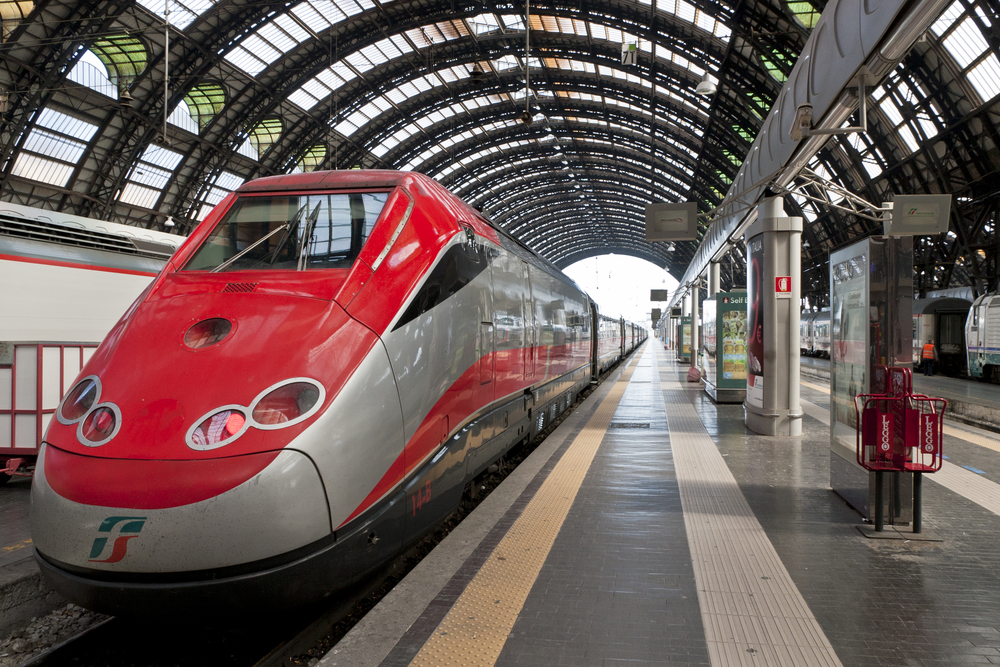
Trains are also a convenient way to get around Italy. High-speed rails connect cities like Turin, Milan, Bologna, Venice, and Trieste. Regional trains make it easy to reach places like Lake Como, Asti, Modena, Trento, Brescia, and Bergamo. If your northern Italy itinerary is solely in cities and bigger towns, it’s not only possible to rely solely on trains to travel through the region but the most hassle-free option.
Once again, Omio makes it easy to search and book train tickets. Download their app and store all your tickets on your mobile device. You can access the ticket with its barcode for the conductor to scan regardless of whether you have an internet connection or not.
Renting a Car in Italy
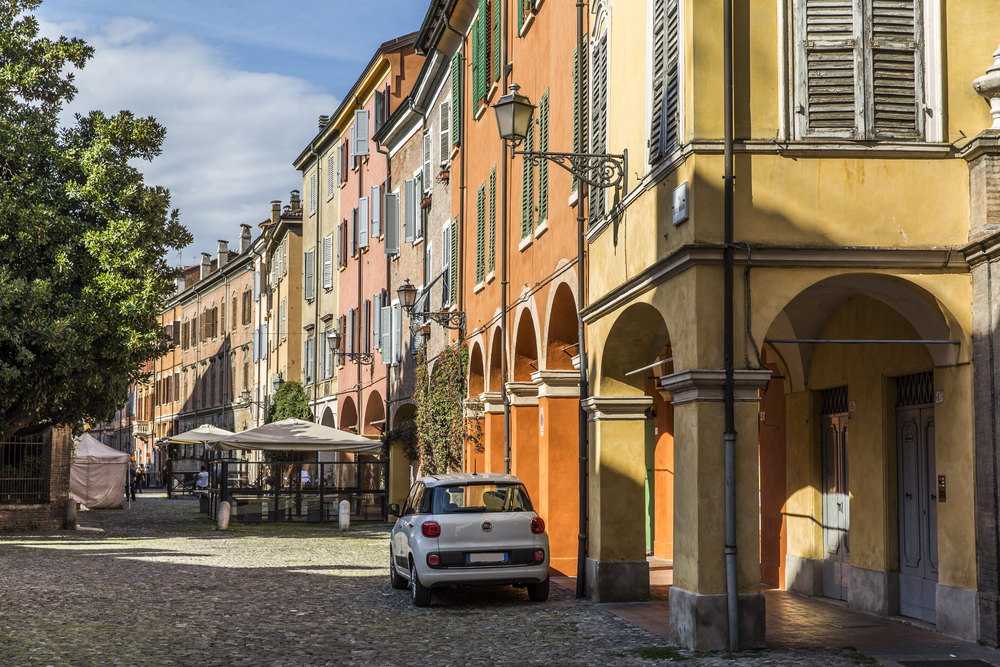
With a car, you’ll have more flexibility to explore the countryside and dictate your own timetable. And if you have your sights on road tripping in the Dolomites or through the Aosta Valley or enjoying the wines and truffles in Piedmont’s rolling hills, you will absolutely need to rent a car.
Driving in Italy is relatively simple. Highways and roads are well-maintained and fueling stations can be easily located.
Here are a few Italy driving tips to keep in mind.
To drive in Italy, you need to have an International Driver’s License. For U.S. citizens, you can easily get one through AAA by showing your U.S. driver’s license and having a passport photo taken. The license is good for 1 year and is valid in many countries around the world.
To be clear, rental car agencies will allow you to rent a vehicle without this international license. However, if you get stopped on the road and don’t have one, you may incur a steep fine. In my experience, it’s arbitrary and depends on who pulls you over.
Manual transmissions are the norm so when renting a car be sure to select an automatic transmission if you need it. Automatic transmission vehicles typically cost more to rent.
When choosing a car, go with the smallest option that makes sense for your needs. Even in cities, roads can be no more than the width of an alley, not to mention it’s much easier to find parking for a smaller car, too.
To save the most money on a car rental, track your reservation with Autoslash. They will search for a better price (whether you booked through Kayak or directly with a rental car company) right up until the day you pick up the car. If they find a better price, you can cancel your first reservation and rebook at the better price. For this rental car hack to work, make sure your original reservation has free cancellation.
Autostradas charge tolls. Typically, you take a ticket from the toll booth when you enter the highway. Upon exiting, you insert your ticket into the toll booth machine and pay the amount on the screen. You can pay in Euros or by credit card. Lanes have symbols for coins and credit cards so you know which form of payment is accepted.
If you’re driving in a city, beware of ZTLs, or Zona Traffico Limitato. These are areas regulated by cameras and local authorities where only cars with a specific permit can drive in these areas. These are often historic city centers and tight residential areas where the municipality wants to control congestion. Driving in these ZTLs comes with a fine so avoid them at all costs.
Where to Stay in Northern Italy
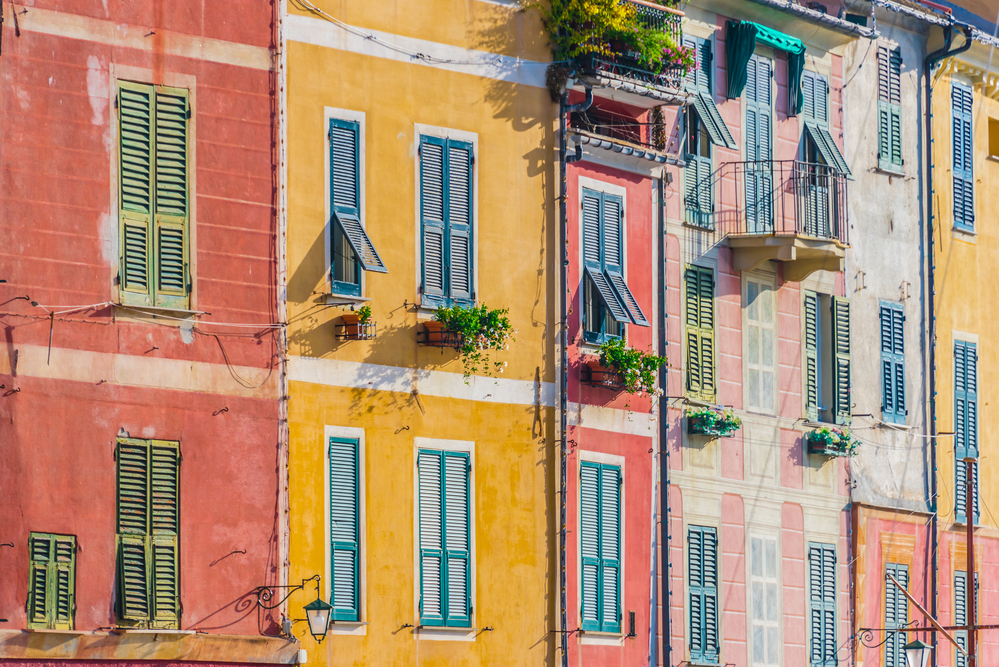
You’ll find all manners of accommodations in northern Italy, from hotels, B&Bs, apartment and house rentals, as well as unique agriturismo countryside properties. Fortunately, there’s something to suit all tastes and budgets. And while not all northern Italy accommodations need to be booked months and months in advance, hotels, in particular, do raise prices the closer it gets to the check-in date.
In larger cities, like Milan, Turin, and Venice, you’ll have plenty of accommodation options. Unless you have a specific property where you want to stay, you can comfortably book stays with less lead time.
It’s much more important to book your accommodation in advance in smaller towns, especially in touristy areas. Villages along Lake Como and Lake Garda, as well as in the Italian Riviera (Cinque Terre, Portofino, etc.) have only so many available places to stay. Book in these places as early as you can!
The same is true if you’re traveling to northern Italy for a particular event or holiday. For example, if you want to be Piemonte for the fall wine and truffle season events, then you’ll want to book at least a few months in advance.
Use sites like Hotels.com, Booking.com, VRBO, and Plum Guide to research and find the right properties for your trip.
Sightseeing and Day Tours
It’s also important to plan how and when you’ll visit the sights and places on your northern Italy itinerary. While it’s possible to book some things as you go, there are popular sights and tours that need to be booked in advance. You’ll also avoid long lines that eat up time and are no fun to stand in, especially in the sweltering summer heat.
Get Your Guide makes it super easy to search for tours, activities, and entry tickets. Plus, you can store all of your activities in the Get Your Guide app for easy access to your booking. Even better, all bookings can be canceled up to 24 hours in advance for a full refund.
For northern Italy specifically, Milan and Venice have a few specific sights to get tickets to in advance.
Milan:

Milan Cathedral and Rooftop Ticket: Get access to all areas of Milan’s famous Duomo without needing to wait in long ticket lines.
Leonardo Da Vinci’s Last Supper Painting: To see this painting, you must book ahead of time. Slots are limited and fill up sometimes months in advance. While you can get Last Supper tickets directly, this tour is much easier to book and gives you skip-the-line access with an expert guide. More info in this guide about all the ways to get tickets for the Last Supper.
Lake Como, Bellagio, and Varenna Day Trip: This popular day trip from Milan gives you the opportunity to spend a full day at Lake Como exploring a few of the beautiful villages along the shores. While this trip may not sell out as quickly as the activities above, if you have a specific day slotted for a day trip to Lake Como in your itinerary, be sure to book it in advance.
Venice:

Doge’s Palace Reserved Entry Admission Ticket: Skip the line by heading straight to the entry for those with reserved tickets and explore this incredible palace.
St. Mark’s Basilica: There are several options for getting tickets to St. Mark’s including going to the official website, as well as a popular combination tour together with the Doge’s Palace. Either way, you want to book in advance because this UNESCO World Heritage Site is a must-see while in Venice!
3. Pre-Departure Checklist
With all of the big things like flights and accommodations booked, this phase is all about the things you’ll want to plan in the weeks leading up to your trip to northern Italy.
Pay attention to the tips about packing and money discussed below. If there’s anything you need to get, allow for the time it will take for those things to arrive.
Packing
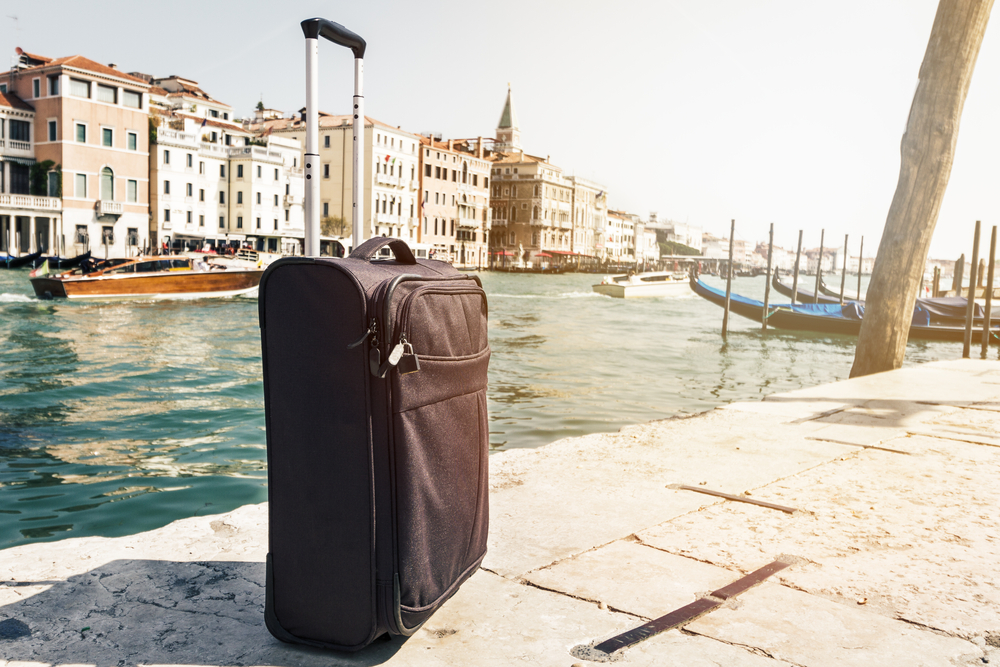
The season you travel to Italy will, of course, determine the types of clothes you need for your trip. Be mindful that Cathedrals and other religious sites often require shoulders and legs to the knee to be covered. If you’re traveling in summer, a simple scarf or wrap will suffice. Knee-length skirts or dresses, as well as convertible pants, are also easy ways to stay cool and respect the rules.
And it is certainly easier said than done, but when you’re packing less is truly more. Maneuvering big, heavy bags on and off trains, along cobblestone, and into small B&Bs with perhaps no elevator is not fun. If you’re renting a car, larger suitcases can be too big for small cars.
This is the suitcase I use for trips to northern Italy up to 2 weeks long. With the help of rolling my clothes and storing them in these compression packing cubes, I can pack everything I need.
My carry-on backpack has some personal essentials and my electronics like my laptop, camera, and lenses.
No matter what season visit northern Italy, here are a few things you’ll want to pack.
Plug Adapter – Pack type “C” adapters. Type “F” adapters may also come in handy in some older buildings. A universal plug can convert both.
Power Strip – Great for charging multiple devices at the same time. The best ones also include USB ports. Perfect if you already have a single plug adapter and want to be able to charge multiple devices.
Battery Pack – Make sure your phone or camera has enough power to get through a full day with heavy use.
Comfortable Walking Shoes – Regardless of the season, you’ll be walking a lot! Historic towns and cities have cobblestones and a lot of uneven pavement.
Water Bottle – You can safely drink the water in Italy. There are refilling points in cities, towns, and popular tourist areas like the Cinque Terre.
Day Bag/Pack – Easy to tuck into your suitcase or carry-on and perfect for carrying around the day’s essentials.
Face Mask – In Italy, you still must wear quality masks like a KN95 or better on public transportation like trains and buses. You may also be asked to wear one in other situations, as well.
Airport Transfers
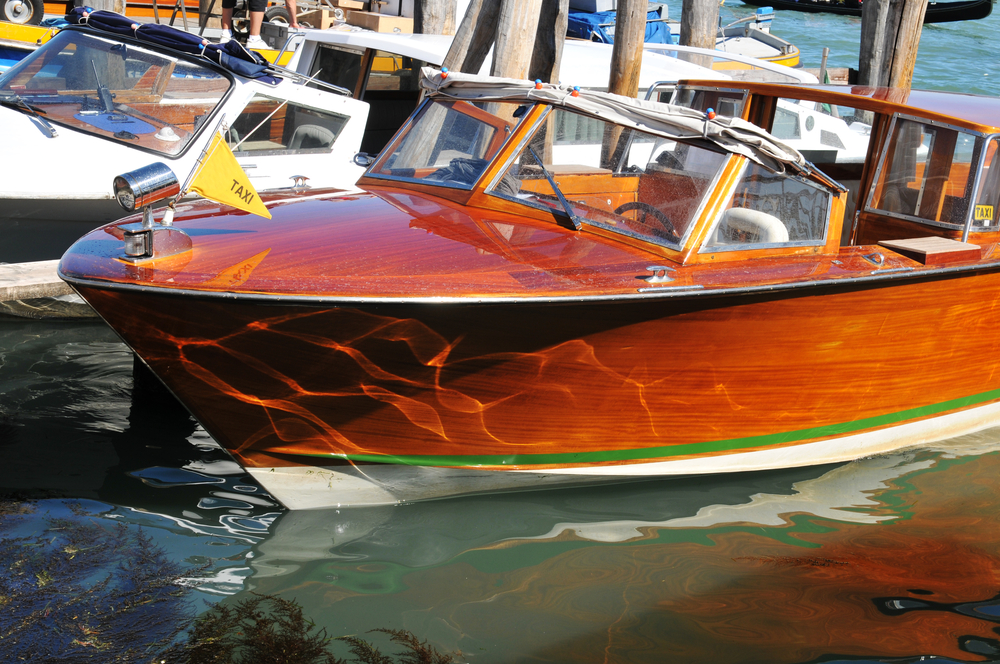
The northern Italy airports are well-connected so whether you want to take a train, bus, private car, or even water transfer (from Venice’s Airport), you have options. You can also rent a car and begin a northern Italy road trip. Whichever transportation suits your plans best, research all the details and book ahead whenever possible to make the transfer from the airport to the city as smooth as you can.
For many international arrivals, Milan’s Malpensa Airport and Venice’s Marco Polo Airport are likely to be the entry point into northern Italy. Below, there are some quick at-a-glance tips, as well as links to detailed guides for arranging your airport transfer.
Milan Malpensa is 30+ miles from the center of Milan. The Malpensa Express is a train that runs between Terminal 1 at the airport to Piazza Cadorna and Milano Centrale. Piazza Cadorna is in central Milan, not far from Castello Sforzesco and Santa Maria delle Grazie, the place where Da Vinci’s Last Supper painting is displayed. Milano Centrale is the main train station with high-speed and regional trains running to cities and towns throughout Italy.
The Malpensa Express train is the best option for your time and budget. As you make your plan to get from Milan Malpensa to the city center, use this guide to learn more about the Malpensa Express and all of your options in fuller detail.
Venice’s Marco Polo Airport is a few miles north of Venice’s city center. It’s important to figure out the details of your transfer from the airport to the city center particularly if your hotel is not on the Grand Canal. Venice can be very confusing to walk around and the signs sometimes are more frustrating than helpful, especially when you’ve got your luggage…in the heat of summer!
The Alilaguna water buses run from the airport to Piazza San Marco. Overland express ATVO buses and taxis run to Piazzale Roma and from there you can take the vaporetto (water bus) to the city center. You can also book a private water taxi directly to your hotel. Keep in mind this is the most expensive of the options. To split the difference between cost and comfort, you can arrange a shared water taxi instead.
Use this guide to plan your transfer from Venice’s Marco Polo Airport to the city center.
Learn a Few Basic Italian Phrases

It always helps to know a few basic phrases in the local language when you travel and Italy is no different. No one expects travelers to speak fluent Italian but when you try, it signals respect which is always appreciated.
Here are some Italian words and phrases to start with.
Buongiorno = Hello
Ciao = Hello or Goodbye (informal)
Grazie (mille) = Thank you (very much)
Per favore = Please
Prego = You’re welcome (Italians also use this word to mean “please,” as in please, come in or please, sit down.)
Il Conto = the bill/check
Non parlo l’Italiano = I don’t speak Italian
Si/No = Yes/No
Arrivederci = Goodbye
Tutto a posto / Tutto bene = Everything is fine/good.
If you’d like to learn more, download the Google Translate app and download the Italian language to your phone. You’ll be able to make translations even if you’re offline. It can also be helpful to have a good Italian phrase book to help with specific situations.
Money
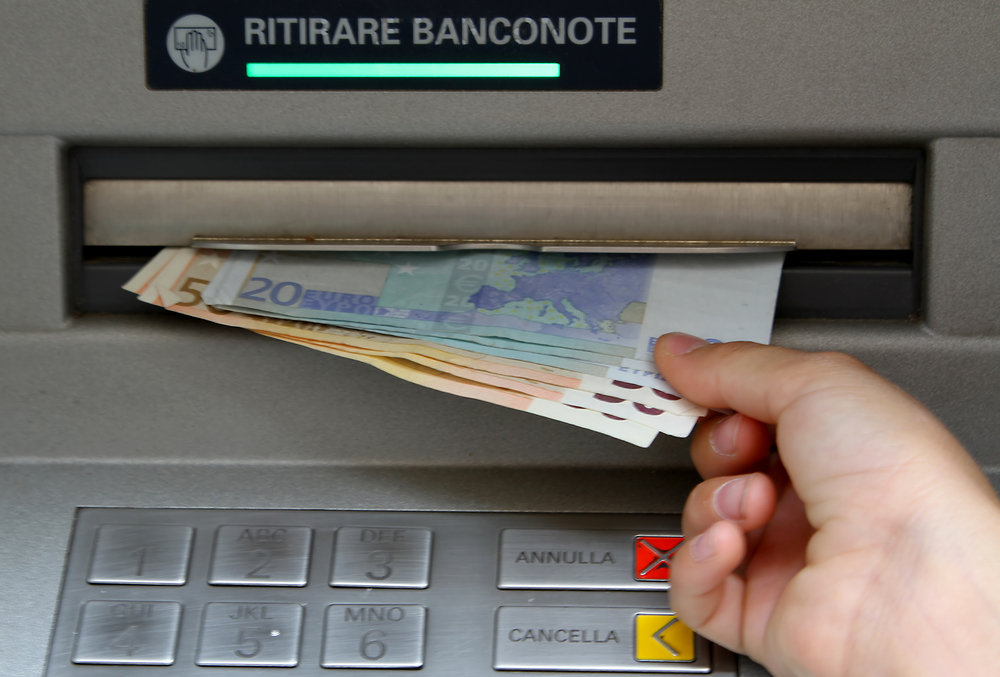
Italy uses the Euro as its currency. It’s best to withdraw Euros with your Debit Card once you’re in Italy, just not at your arrival point like at an airport. These usually have some of the worst exchange rates. Once you arrive at your accommodations, find a bank with an ATM to take cash out.
Debit cards with a pin can be used to withdraw cash from ATMs. In some cases, like at a self-pay gas station, you can only use a card that is PIN-enabled. If your credit card doesn’t also have a PIN for these instances, your Debit Card can serve as the backup.
ProTip: For extra bank account security when you travel, consider opening a Schwab bank account. Not only does it reimburse you for ATM fees, but you can also use this account to put just some money for travel. If your debit card gets stolen or skimmed, the thief only has access to the money in that account instead of everything in your regular account.
In many places, especially in cities and larger towns, credit cards are also widely accepted. Visa, Mastercard, and American Express cards are typically ok, however, it’s best to travel with more than 1 type of credit card. For example, bring a Visa card and an American Express card to ensure you have a backup in case one isn’t accepted.
In addition to the types of cards, be sure your credit card does NOT charge foreign exchange fees. For example, the popular Chase Sapphire Preferred does not charge these fees but the Chase Freedom Unlimited does.
When using your credit card, always opt to pay in Euros instead of your local currency. You’ll avoid the worst exchange rates and baked-in convenience fees by doing so.
In small towns and villages, it’s best to have some cash on hand in case there’s a cash-only shop or cafe.
ProTip: It’s a good idea to alert your bank that your Debit Card may be used overseas. However, many traveler favorite credit cards like the Sapphire Preferred or an American Express Gold Card can be used internationally without any advance notice.
Internet

We all know how important cell phones and connectivity are, whether it’s to look up directions to a location, access online tickets and reservations, or send a text message. So it goes without saying, you need to stay connected even when you’re traveling in northern Italy whether you’re in a big city or the countryside.
Wireless carriers often have international data plans but these are pricey, often charging a flat rate per 24-hour period and slowing your speed if you go over a set amount of data.
If you have an unlocked cell phone, you can purchase a SIM card intended for travelers. I’ve used TIM & Vodafone while traveling in Italy. You can typically find them at transportation hubs like airports and train stations, but you can also buy them in cell phone shops and even online prior to your trip. Expect reliable 4G coverage with some 5G in larger cities.
Depending on your phone model, you may also be able to get an e-SIM. Providers like OneSim sell both physical and e-SIM cards. The great thing about the e-SIM is that you don’t need a physical card. Instead, you download the e-SIM just as you would for an app. Only newer model phones are compatible so be sure to check you have the right phone.
Regardless of what type of SIM you buy, if you purchase it through a company outside of Italy, make sure Italy is included in the list of countries with coverage.
Another option is a portable Wi-Fi device. This allows you to create your own hotspot and connect multiple devices. This can be a great solution for families or if you want a secure connection for your laptop. If you’re staying in a countryside rental home, a portable Wi-Fi brings peace of mind that you’ll have a connection.
Some car rental companies, like Hertz, rent these devices for a flat rate per day. And while this may seem not much better than your wireless carrier’s international plan, it actually is. For starters, data isn’t capped so there’s no slow down of speeds. Second, you can connect multiple devices.
If you’re a frequent traveler, it’s more cost-effective to purchase your own portable Wi-Fi device. Companies like GlocalME and Huawei products are solid options to consider.
Time Zones & Jet Lag
Italy has only 1 time zone, Central European Time. Central European Summer Time is used when Daylight Savings is in effect. With only a couple of exceptions, this means Italy is 6 hours ahead of New York City’s Eastern Standard Time. Italy’s Daylight Savings calendar is slightly different than the U.S. so for a couple of weeks in the year, the 6-hour time difference is affected.
Chances are you have just 1-2 weeks for your northern Italy trip. You don’t want jet lag to cost you precious days.
Here are a few basic tips to help you manage, and possibly, avoid jet lag.
24-48 hours before your trip, start to be aware of what time it is in Italy. If you can, eat a meal as if you are already in Italy.
Get up early on your departure day. It’s likely your flight to Italy (when coming from the U.S. or Canada) is at night. The more tired you are when you finally board the plane, the more likely it is you’ll sleep on the flight.
Try to sleep even a little bit on the flight. Even a couple of hours will help!
Plan a full and active first day, preferably with walking and outdoor activities like visiting the roof of Milan’s Duomo or getting lost on foot in Venice’s labryinth of alleyways. Take rests to eat when the locals do and stay up as late as you can, but at least to a regular bedtime hour.
Plan Your First Day in Full
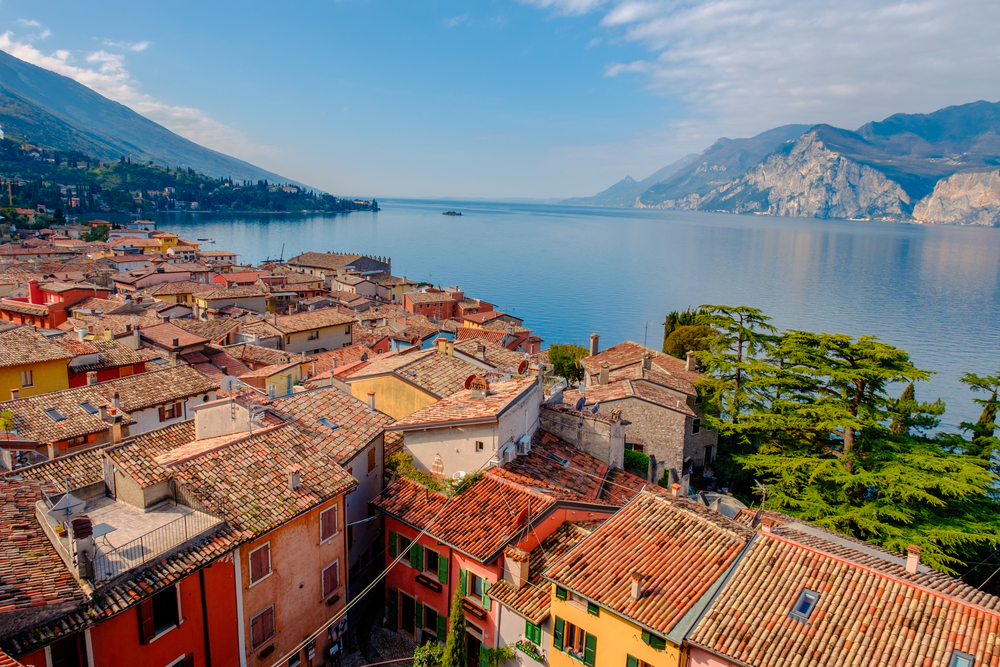
When you’re planning an itinerary for your northern Italy trip, it makes sense to leave some flexibility for when you stumble upon the cutest countryside village ever or just want to have a few extra cappuccinos at the cafe in the piazza.
But that’s not for the first day.
From the moment you land, you need a plan. Know where you will go once you’ve collected your luggage and how you’re getting there. If you need train tickets or to arrange a private airport transfer, have this pre-arranged (if possible).
After this, have a plan for what you want to see and do. If you need to get tickets or arrange an activity, book it in advance.
Consider making a reservation for dinner, too. Reach out to your hotel for assistance if you need or use a website like The Fork to make restaurant reservations online. (Not all restaurants are available for online booking so if you don’t find what you’re looking for, do a broader search for your area using Google.)
Having a solid plan for your first day reduces stress, helps to maximize your time, fights jet lag, and gets your northern Italy vacation off to a successful start! It’s an absolute win-win!
Traveling Northern Italy…
…is an absolute dream! With research and time, you can plan a trip to northern Italy that includes must-see sights, hidden gems, and unique local experiences.
By specifically focusing on the regions in the north, your northern Italy travel itinerary will be about sightseeing, of course, but also about the amazing discoveries and experiences that only come from a one-of-a-kind itinerary away from crowded touristy hotspots.




